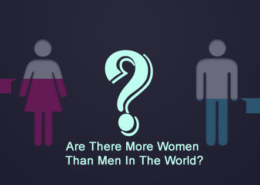Is It True there are More Women Than Men In The World?
The argument that there are more women than men in the world comes up most of the time. In some parts of the world, especially Africa, it is believed there are more women than men hence, men marry more than one wives. Is this assertion true? What then is the actual Gender ratio?
Perhaps this 2019 article on Gender Ration by Hannah Ritchie and Max Roser will answer this question.
Gender Ratio
Summary
- The sex ratio at birth is not equal: in every country births are male-biased. There are biological reasons why there are slightly more boys born every year than girls. The ‘natural’ sex ratio at birth is around 105 boys per 100 girls (ranging from around 103 to 107 boys).
- In some countries, the sex ratio at birth is much more skewed than would occur naturally. Today and in the recent past this is particularly common across Asia and North Africa. Here there is clear evidence of gender selection through prenatal sex determination and selective abortion.
- In countries where there is a clear son preference, the sex ratio at birth becomes increasingly skewed with birth order (the third or fourth born children are more likely to be boys than the first or second child).
- In nearly every country, boys are more likely to die in childhood than girls. There are biological reasons for this: boys are more susceptible to birth complications and infectious diseases,
- In countries where there is strong son preference, mortality rates for girls are higher than would be expected: this can occur either through direct infanticide, but also through neglect and unequal treatment .
- The sex ratio tends to decrease over the life course (from becoming male-biased to female-biased). This is because women tend to live longer than men.
- It’s estimated that today there are over 130 million ‘missing women’ in the world as a result of selective abortion and excess female deaths.
- The banning of sex determination scanning and gender-selective abortion may have limited the increase in sex ratio at birth in some countries, but did not fully address the problem.
- Development can have opposing impacts on sex ratio: there is evidence that the son preference declines with education, but this often goes hand-in-hand with declining fertility rates and increased access to selective technologies (which can increase the sex ratio)
References:
https://ourworldindata.org/gender-ratio



Leave an answer
You must login or register to add a new answer.